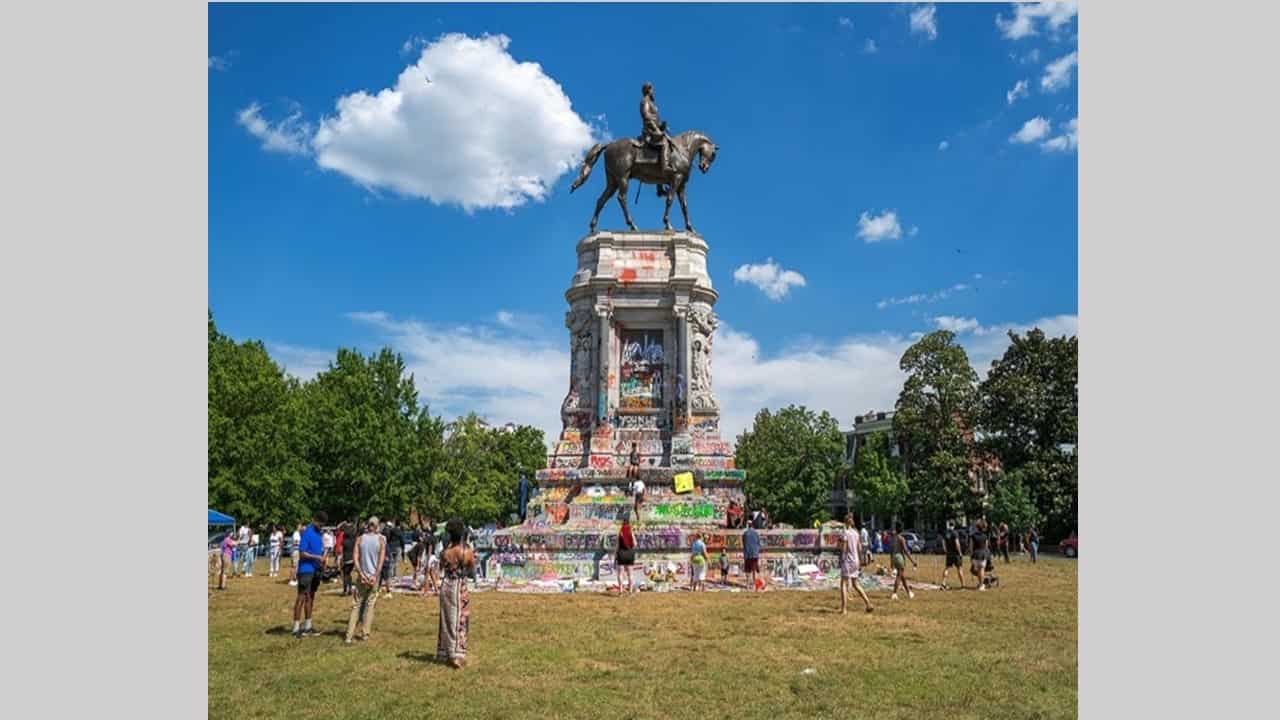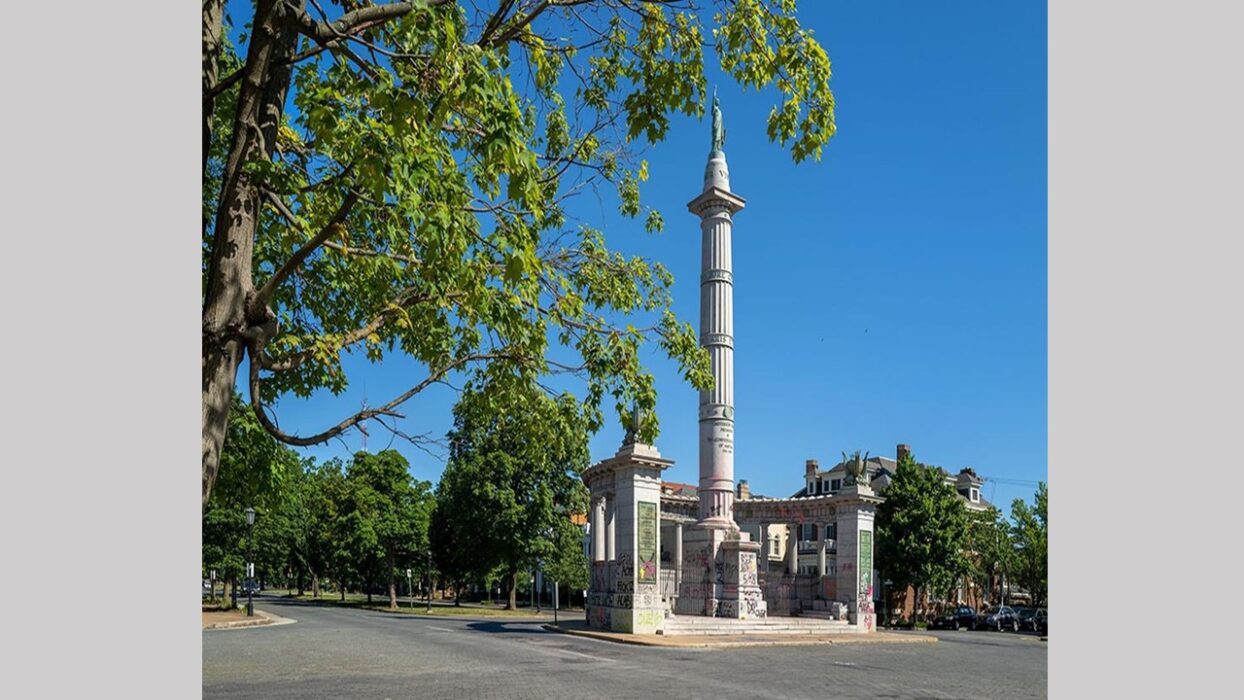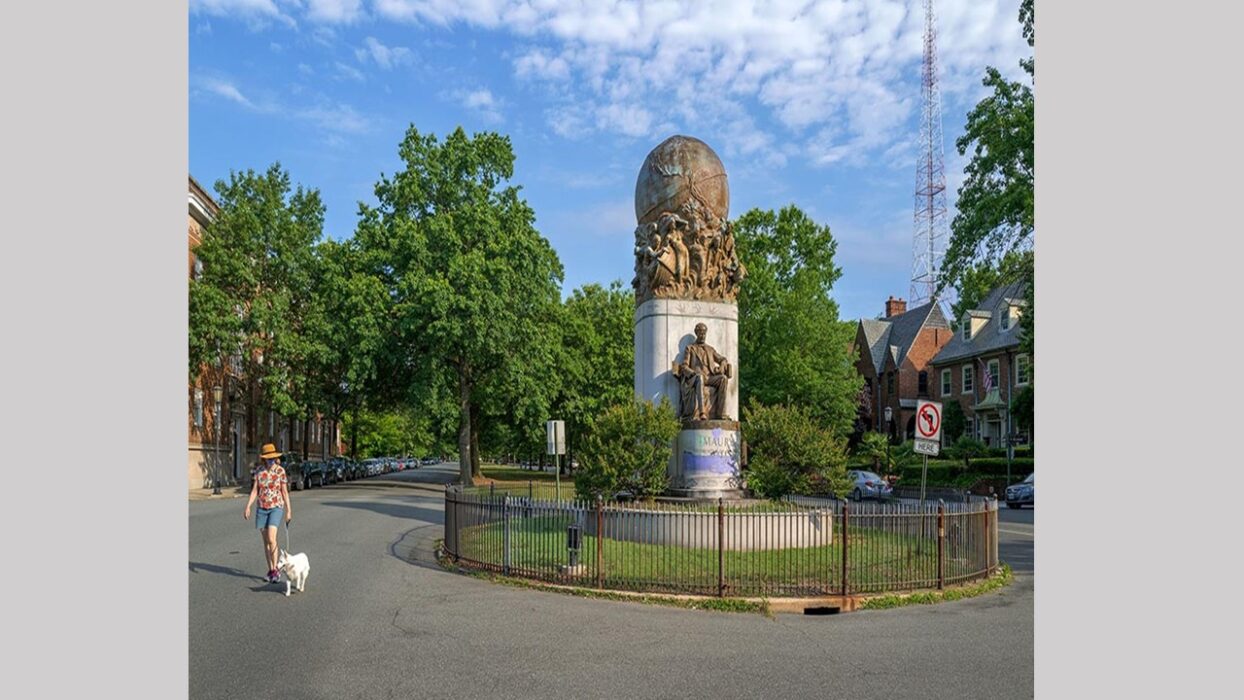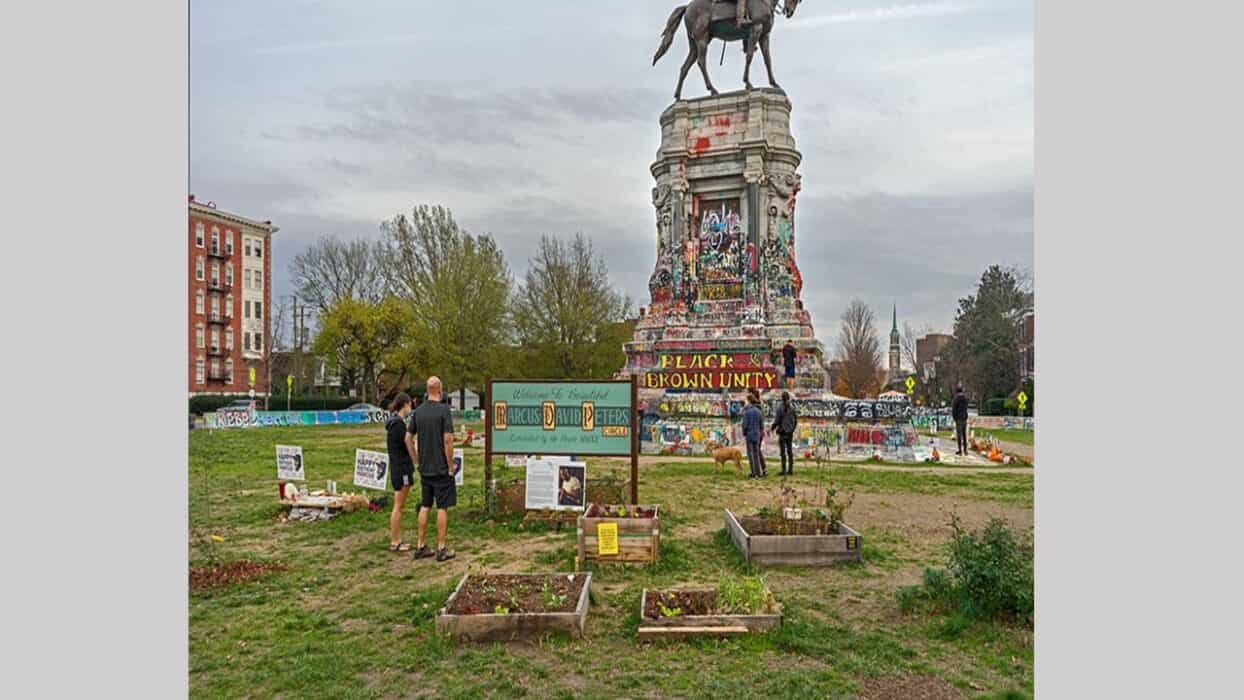The first wave of the Covid-19 pandemic crested in New York in the spring of 2020 when the eerie calm of the lockdown was broken by the news of the police killing of George Floyd in Minneapolis. Protesters flooded into the streets across the country demanding justice under the slogan “Black Lives Matter.” I followed the news coming out of my home state of Virginia, a place I had left behind – or perhaps, fled from – seeking my fortune in New York City. There, demonstrations focused on Monument Avenue in Richmond with its imposing statues of Confederate generals. On June 16th, the statue of Jefferson Davis, former president of the Confederacy, was toppled by protesters. A few days later, I drove down to Richmond to document the last days of the grand boulevard of the Lost Cause.
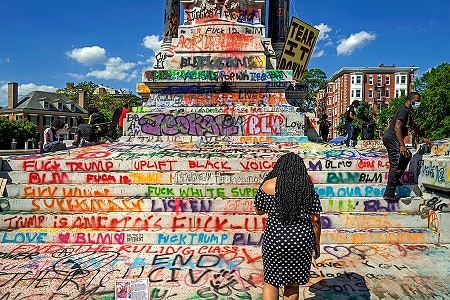
Pedestal Robert E. Lee statue
The urgency I felt was, at least to some degree, spurred by recent research I had done on my family history, which had always been largely a mystery to me. A black hole, really. My grandparents on my father’s side died young, and my mother ran away at 16 from an abusive home. So, I never knew any relatives on her side of the family. What I discovered was that my Virginia roots ran all the way back to Jamestown on both sides of the family, and that my ancestors were among the gentry who settled up and down the James River between Hampton Roads and Richmond. We were a modest middle class family with no pretensions to a glorious past, but it turns out, one of my 10th great grandfathers was George Yeardley, royal governor of the Virginia colony in 1618. Yeardley, who presided over the first representative body in the “new world” was one of the fathers of American democracy, but he was also one of the first slaveholders in Virginia. In fact, a number of the first Africans to arrive on a Dutch ship at Point Comfort in 1619, were enslaved on Yeardley’s plantation on the James River.

Pedestal J.E.B Stuart statue
Driving into Richmond, I found the city streets abandoned with many storefronts along Broad Street boarded up to deter looters. There were plenty of people, however, on Monument Avenue especially in the grassy circle surrounding the massive Robert E. Lee statue, its pedestal now covered in a kaleidoscope of graffiti. Down the street, the sloping base of the J.E.B. Stuart statue was being used as a skateboard ramp. Although, the initial defacing of the monuments may have been an expression of rage and indignation, the atmosphere, by the time I arrived, was festive, even jubilant. Robert E. Lee sat steely-eyed as always atop Traveler, his trusty steed – we even remember his horse’s name – but now drenched in a rainbow of colors surrounded by a multi-racial crowd.
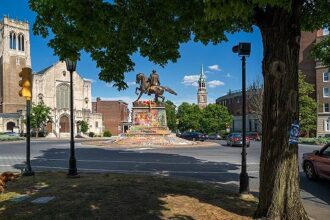
J.E.B. Stuart statue
It was, indeed, a purposeful and theatrical desecration of the sainted Lee and the myth of the Lost Cause – that was exactly the point – and in the process of taking possession of the statue, the power of this symbol of white supremacy was diminished, its meaning transformed.
Instinctively, I understood that this was a profound moment, though transient, and that it was important that it be preserved with my camera.
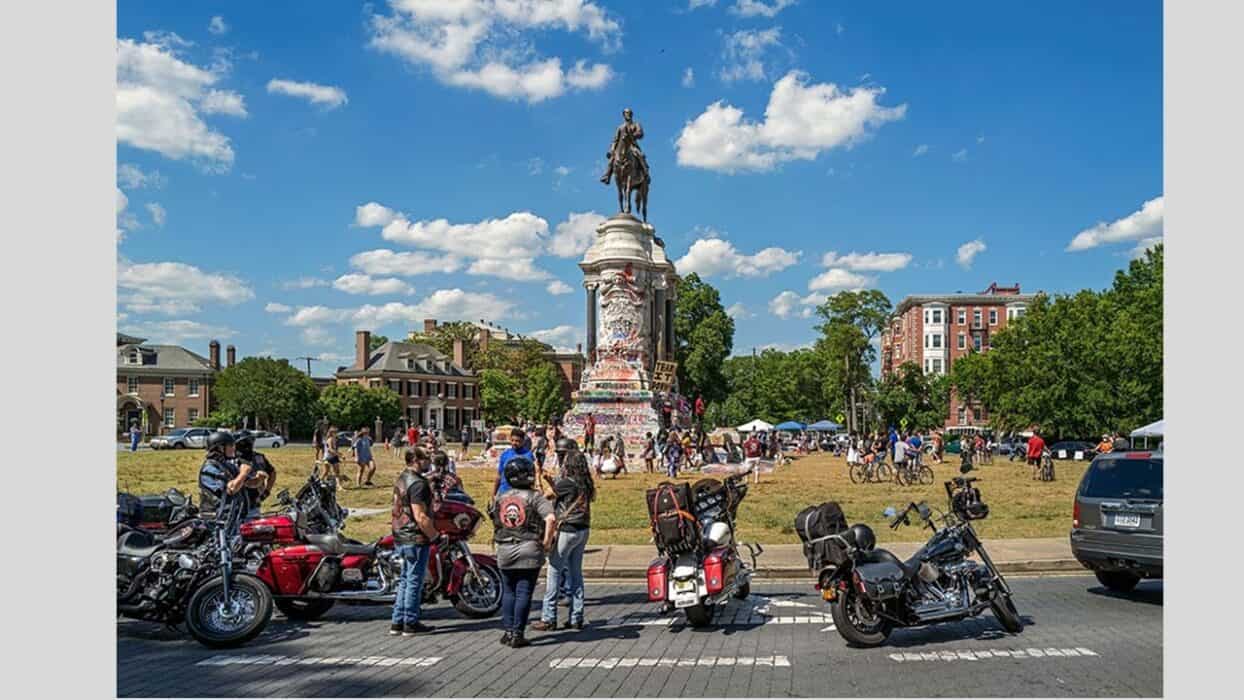
Robert E. Lee statue
Born in Virginia, Brian Rose moved to New York City in 1977 where he photographed the Lower East Side of Manhattan, and later participated in a survey of the Financial District, funded by the National Endowment for the Arts. Rose has since undertaken a number of long-term projects in Europe including documenting the Berlin Wall and the Iron Curtain, the rebuilding of Berlin, and the urban landscape of Amsterdam. In response to the election of Donald Trump in 2016, Rose photographed Atlantic City, the scene of Trump’s bankrupt casinos. He published a blog about this project for the John Adams Institute, called Atlantic City, Forlorn. Click here for his book about Monument Avenue in Richmond. Rose’s images have been collected by the Museum of Modern Art and the Metropolitan Museum of Art, and he has produced nine books.
National Endowment for the Arts. Rose has since undertaken a number of long-term projects in Europe including documenting the Berlin Wall and the Iron Curtain, the rebuilding of Berlin, and the urban landscape of Amsterdam. In response to the election of Donald Trump in 2016, Rose photographed Atlantic City, the scene of Trump’s bankrupt casinos. He published a blog about this project for the John Adams Institute, called Atlantic City, Forlorn. Click here for his book about Monument Avenue in Richmond. Rose’s images have been collected by the Museum of Modern Art and the Metropolitan Museum of Art, and he has produced nine books.
